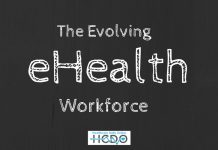 The implementation of electronic health records and the burgeoning field of telemedicine have created a need for the healthcare workforce to constantly update their knowledge of the technology that is changing the field.
The implementation of electronic health records and the burgeoning field of telemedicine have created a need for the healthcare workforce to constantly update their knowledge of the technology that is changing the field.
This new fold to the professional landscape has led to the need for workers to attain professional certifications that help them keep pace with trends in their industry. Attaining professional certifications shows that an employee meets a standard for a body of knowledge and are up-to-date when it comes to their professional development.
This trend is likely going to increase as technology pervades the modern workplace. In addition, it will likely increase the pursuit of Health Information Management Systems Society (HIMSS) certifications and in doing so, increase the amount of online learning required of professionals.
The What and the Why
There are two types of Health IT certifications. The first, the Certified Associate in Healthcare Information and Management, is meant for emerging professionals and is designed to be a pathway into healthcare IT. The second, known as the Certified Professional in Healthcare Information and Management, is a professional certification for experienced healthcare information professionals.
Certifications such as the ones HIMSS offers allow healthcare professionals a chance to distinguish themselves in a competitive marketplace, expand career opportunities, validate their credibility, demonstrate their commitment to an organization and gain skills that can help them make a difference in the organization.
For the Certified Associate certificate, candidates need only a high school diploma or its equivalent. For the Professional certificate, however, a degree from an accredited college or university and five years of experience in information and management systems, with at least three of those years in a healthcare setting is necessary.
Once a certification is received, education is not complete, but ongoing. Renewal of the certificate must be done every three years, so maintaining it as those three years progress through approved and well-tracked educational activities is a good idea.
The Future of Health IT
According to the U.S. Bureau of Labor and Statistics (BLS), demand for IT professionals in hospitals will rise by 42% through 2022. Health informatics jobs make up approximately 1/8 of all healthcare job postings and that percentage is also expected to rise.
Common job paths in the field include:
- Electronic Health Records (development and maintenance)
- Analytics
- Coding
- Education and Research
- Meaningful Use Specialist
Healthcare job security likely will not be much of an issue for professionals entering into the career field. The increase in the number of positions has created a void in the job pool. According to a Price Waterhouse Coopers (PwC) survey, 34% of healthcare leaders say they’ve cancelled or delayed strategic initiatives due to a lack of available talent in Healthcare IT. Their troubles may continue as Health Information Technology is being pushed to new heights by the Affordable Care Act.
As Baby Boomers reach the age of retirement, the healthcare field will need to find as many qualified professionals as possible in order to keep up with the demand for services. Increased automation when it comes to EHRs and treatment devices will likely mean that the future of nearly all healthcare jobs will include some education in Health IT. Those who specialize in it will have the opportunity to not only influence, but possibly even help revolutionize the American healthcare system.









